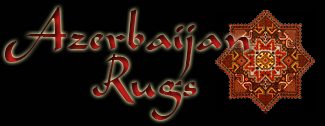
 |
|
|
OUR MAIN DYESTUFFS
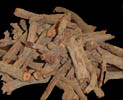 Madder |
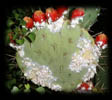 Cochineal |
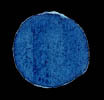 Indigo |
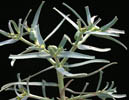 Euphorbia |
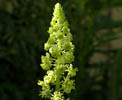 Weld / Dyer's Weed |
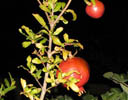 Pomegranate Skins |
 Walnut Husks |
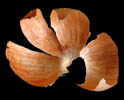 Onion Skins |
Natural colourants fall into three categories, according to the techniques for using them - mordant dyes, vat dyes and direct dyes.
Mordant Dyes
This is the largest category. Without a mordant these dyes can not, or can do so on slightly, and the fixing action of a mordant is essential if the dye is to take. Mordants may be used before, during or subsequent to dyeing. When they are used both before and after the dyeing process, the resultant colour will be stronger. The mordant alum (potassium aluminum sulphate) is most commonly used as it gives the brightest colours.
Vat Dyes
The most important of these is indigo. Vat dyes are not soluble in water, but can be brewed in an alkaline liquid in a sealed container, or vat, to produce a liquor in which the dye is present as a colourless salt. Urine is often used to make the indigo brew, so the liquor is yellow. It is diluted for dyeing and no blue colour appears until the yarn is removed from the dyebath. Contact with air reverses the original brewing reaction, precipitating indigo onto the fibres.
Direct Dyes
As the name suggests, direct dyes colour the fibre without a mordant or vatting. Walnut husks and leaves provide direct dyes that produce various shades of brown. Madder can also be used without a mordant.
Natural dye colours are derived from the following
elements:
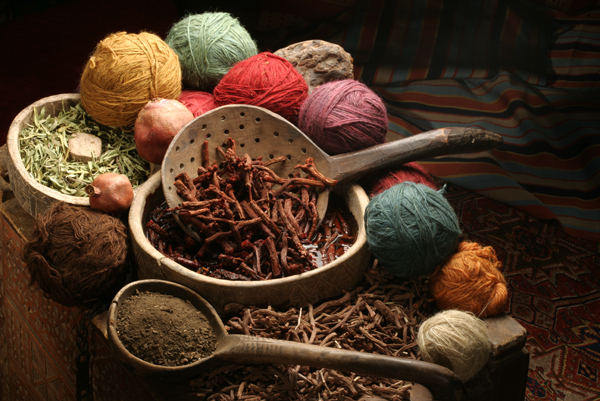
CLICK HERE FOR A COMPLETE LIST OF NATURAL DYE SOURCES
|
Red is also
derived from other plants, berries and flowers, such as poppies (producing dark
red), cherry skins, some rose roots (crimson), tulip petals (maroon). The bark
of the jujube tree (Ziziphus nummlaria) and rhamnus (Rhamnus persicus) also
provide red, as do the roots of rhubarb (Rheum) |
|
Indigo has been in use for many centuries, and the plants
of the genus Indigofera produce a much stronger dye that those of the Isatis (woad)
family; however, dyer’s woad is much more easily cultivated and therefore more
widely used than Indigofera, which needs a tropical climate. Isatis tinctoria
grows up to approximately 1.50 m(5’) in height and can be harvested three times
a year, whereupon the leaves are dried and kept for two months before use.
Indigo sulphonic acid is a derivative of indigo, made from the combination of
indigo and sulphuric acid, and there is evidence to show that this dye was sued
as early as the sixteenth century, although it was not recognized scientifically
until the eighteenth century. |
|
A number of these plants yield more than one type of yellow
dye. Quercetin is frequently the main constituent, and is found in spurge,
onion, St John’s wort, tanner’s sumach, buckthorn, chamomile and dyer’s
chamomile. It is also found in bastard hemp, although it is the datiscetin that
produces the brilliant yellow colour that results from combining the dye with an
alum mordant. Apigenin is found in chamomile, wild chamomile and dyer’s weed.
Chamomile and dyer’s weed also contain luteolin. Fisetin is present in dyer’s
sumach and crocin in saffron. Centaury roots, turmeric, Artemisia and the leaves
of daphne and wild apple are also occasionally used to produce yellow dye. With the exception
of madder, it is the plants yielding yellow dyes that are more readily available
than any other primary colourants used in the dyeing process. But if we try to
identify the different yellows used in antique rugs, it is very difficult, as
many of the same dye-yielding plants grow throughout the all regions. |
|
Orange is made by combining red and yellow dyes; madder is used
for the red colourant. Various yellow dyes are used. Quercetin produces a very
bright orange, Apigenin less brilliant, and luteolin results in a reddish
orange. Grass roots and the bark of plum tree also serve. The dried and
pulverized leaves of henna are popular not only for dyeing wool but also for
decorating the human body and hair. |
|
Purple or violet is made by combining red and blue. The woolen yarn is first dyed with indigo and then by either madder or cochineal. Purple colour in certain antique kilims from Anatolia and Caucasia contains no indigo, but is derived from two madder dyes using an iron mordant.
|
|
Green is produced by mixing yellow and blue. The various
yellow dyes are combined with indigo and indigo sulphonic acid result in
differing tones of green. Pistachio and olive leaves produce a light green,
although leaves often yield a yellowish green. With indigo, the yellow dyes are
usually Quercetin and luteolin, whereas with indigo sulphonic acid, buckthorn
berries are used. |
|
|
|
Black is achieved by combining plants with a tannin content with iron. This introduction of iron and the processing necessary damages the wool, so that it tends to corrode with time. Plant sources of tannin are the knobbly oak (of the Quercus family), oak apples, tanner’s sumach, and the skin of the pomegranate (Punica granatum). Adding some walnut husks into the indigo dyed wool yields also very dark brownish black. |
| WHITES: Natural wool yields ivory white. To achieve a pure white, wool is bleached using qarğa düzü stone produced on the Absheron. For flatweaves, cotton is used to get a pure white. Note: Because of the regional variation of soil, dye plants from different areas will produce different results. There are, therefore, a multitude of possible colour permutations. The time required for colouring the wool, the mordants and the water used will also affect the end colour. One dyebath will produce different results from another. |
Copyright © Azerbaijan Rugs 2004-2019
E-mail:
vd@azerbaijanrugs.com
E-mail:
ra@azerbaijanrugs.com
Tel: +994 50 380 88 78
(Baku, Azerbaijan)
Tel: 415.690.7735 (San Francisco, USA)